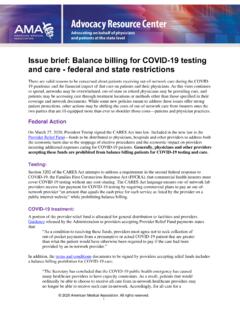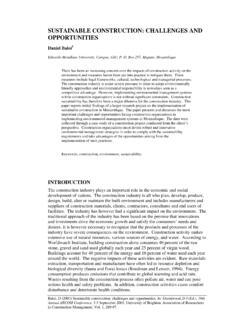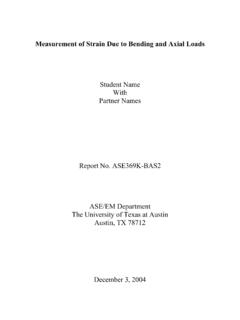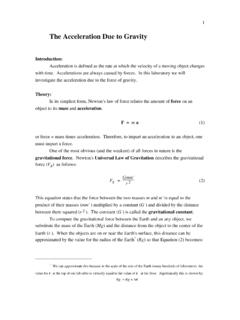Transcription of Why central bank balance sheets matter
1 2 BIS Papers No 66 Why central bank balance sheets matter Jaime Caruana1 1. Introduction Let me begin by thanking Governor Prasarn for co-hosting this joint bank of Thailand-BIS conference here in this historic city of Chiang Mai. And on behalf of all those present, I would like to extend our deepest sympathies to our Thai colleagues and offer encouragement as you and your nation continue to address the challenges arising from the devastating floods this year. Today, we take up the important subject of central bank balance sheets . This may sound arcane, but it has often proved crucial in designing and understanding policies pursued in the wake of financial crises in recent years.
2 I need hardly tell this audience that balance sheet stocks are just as important as income flows. Indeed, one of the lessons of the recent crisis is that more attention must be paid to balance sheets than was the case before the crisis. This is true for all economic agents. As you know, Governor, you and your fellow governors of the BIS s Asian Consultative Council encouraged the economists in our Hong Kong office to think hard about the balance sheets of central banks. We have invited a number of leading international experts here to help us by telling us about their research. We hope that this conference, and the research reported, will contribute to our better understanding of the difficult and controversial issues now facing the central banking community.
3 To set the stage for our discussions over the next day and a half, I d like to start with some observations about the special role that central bank balance sheets have played historically in ensuring monetary and financial stability. Then I will outline how policy responses to recent crises have transformed central bank balance sheets . central banks have been ready to buy a wide range of financial assets on a large scale in order to further major macroeconomic and financial stability objectives. Because the scale and persistence of the world-wide expansion in central bank balance sheets is unprecedented, we need to pay special attention to possible medium-term risks. I will pose four questions about such risks and mention work by BIS economists on these questions.
4 2. The historical power of central bank balance sheets The central bank s deliberate use of its balance sheet has played a salient role in financial history, especially during crises. From very early on, central banks were given the monopoly of note issue, and the role of lender of last resort naturally fell to them. Bagehot (1873) clearly understood this privileged position vis- -vis the rest of the financial sector in the 19th century. During times of financial distress, only the central bank could be a credible lender of last resort. Its ability to create monetary liabilities could be used to provide liquid assets to a bank in difficulty. 1 General Manager, bank for International Settlements.
5 BIS Papers No 66 3 During the Gold Standard period, time and again central banks took centre stage in preserving the integrity of the international monetary system. central banks provided essential liquidity at times when gold convertibility came into question. And it became increasingly well understood during this time that a central bank could play the pivotal role in responding to periodic financial crises. Indeed, it was the deep financial crisis in the United States in 1907 that prompted the US Congress to finally set in motion the creation of the Federal Reserve System. The explicit understanding was that the Fed would use its balance sheet to promote a currency that would be elastic in meeting the needs of a growing economy.
6 The idea was also that it would address the forces behind the periodic financial panics that had plagued the United States up to that time. We should not forget, of course, that mistakes have been made over the years. Lessons were learned along the way. In the 1930s, for example, the deepening of the Great Depression was due in part to the failure of the major central banks to fully grasp the consequences of debt deflation. central banks in the 1930s failed to use their balance sheets sufficiently to lower long-term rates and to counter a cascading sequence of bankruptcies. The lessons learned from that crisis have guided many central banks in dealing with the recent crisis.
7 A stylised central bank balance sheet can be helpful in clarifying the various transmission channels (Table 1). Any accumulation of assets implies an increase in corresponding liabilities. In addition, the purchase of domestic assets will directly affect their prices, and therefore credit spreads, term premia and long-term interest rates. An increase in monetary liabilities eg reserve money will have implications for the liquidity of the banking sector in the short run, and this may undermine price stability in the medium term. But an increase in long-term liabilities could also crowd out lending to the private sector. Table 1 A central bank balance sheet Assets Liabilities and capital Net foreign assets Reserve money Net domestic assets Currency in circulation Reserves of commercial banks Non-monetary liabilities central bank securities Others Equity capital Taking into account these transmission channels, it is quite clear that large expansions of central bank balance sheets have implications both for the real and financial sectors of the economy.
8 They do create risks and we must watch these closely. In some historical episodes, central banks did expand their balance sheets too much in order to finance profligate government spending. This often had inflationary results. On other occasions, central banks were too slow in reversing expansionary policies when conditions improve. 3. Crisis-induced revival of a policy focus on balance sheets In normal periods of stability and prosperity, however, interest in central bank balance sheets tends to wane. Indeed, by the end of the 1990s, the policy focus of most central banks in the 4 BIS Papers No 66 advanced economies had moved away from their balance sheets . Monetary policy frameworks came instead to focus almost exclusively on policy interest rates.
9 This was the time of what we once called the Great Moderation . Inflation worldwide had fallen to low levels and become more stable. The variability over time in the level of assets and liabilities of central banks declined. balance sheets took a back seat in the formulation of monetary policy, even though they continued to play an important role on the operational side of central banks in the implementation of policy. Two major shocks have changed this. The first was the Asian financial crisis of 1997/98. This convinced the authorities in Asia that they needed to build up foreign exchange reserves to protect themselves against future crises. But nobody in the mid-2000s expected such a large increase: forex reserves held by central banks in emerging Asia rose from $2 trillion at the beginning of 2006 to over $5 trillion now exceeding 45% of GDP (Graph 1).
10 Graph 1 Foreign reserves in Asia1 As a percentage of GDP 1 Aggregate of China, Chinese Taipei, Hong Kong SAR, India, Indonesia, Korea, Malaysia, Philippines, Singapore and Thailand. Japan is excluded. Sources: IMF, IFS; national data. The motives for the further accumulation of forex reserves changed as time progressed. Increasing foreign exchange reserves became more and more the by-product of the exchange rate regimes adopted in the region. This policy choice often reflected the export-oriented growth strategy pursued by many countries. This has had major international implications, but these are not the subject of my speech The sizable build-up of the asset side of central bank balance sheets also required a comparable increase in domestic liabilities.















